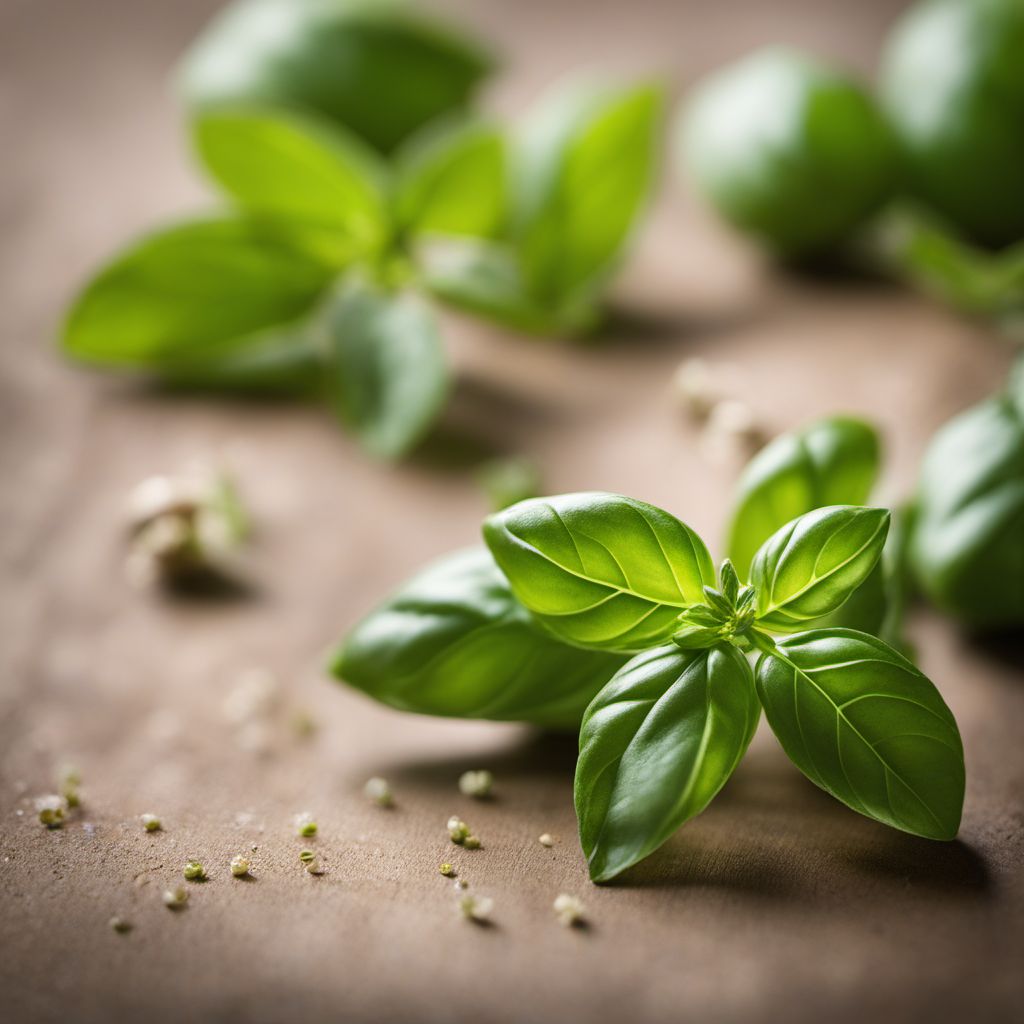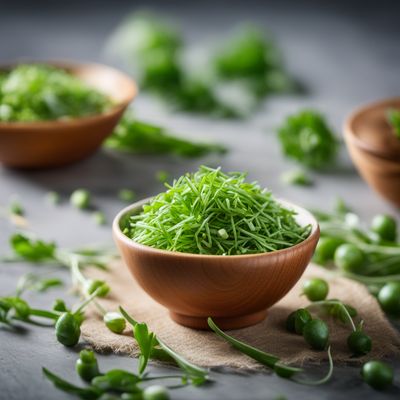
Ingredient
Basil flavour
The Fragrant Herb: Unveiling the Delightful Essence of Basil Flavor
Basil flavor is characterized by its vibrant green leaves and distinct aroma. It has a slightly sweet and peppery taste with hints of clove and anise. The texture of basil leaves is tender and delicate, while its appearance showcases glossy, elongated leaves that vary in size.
Origins and history
Basil flavor originated in India and has been cultivated for over 5,000 years. It holds cultural significance in various cuisines, including Italian, Thai, and Mediterranean, where it is used as a symbol of love and fertility. Basil was introduced to Europe by the Romans and gained popularity for its culinary and medicinal properties.
Nutritional information
Basil flavor is a good source of vitamin K, vitamin A, and manganese. It is low in calories and contains antioxidants that promote overall health and well-being.
Allergens
There are no known allergens associated with basil flavor.
How to select
When selecting basil flavor, look for fresh leaves that are vibrant green in color, without any signs of wilting or discoloration. The leaves should be plump and free from blemishes. Avoid basil with yellow or black spots, as it indicates deterioration.
Storage recommendations
To maintain the freshness of basil flavor, store it in a plastic bag with a damp paper towel in the refrigerator. Alternatively, place the stems in a glass of water and cover the leaves loosely with a plastic bag. Avoid storing basil at room temperature, as it tends to wilt quickly.
How to produce
Basil flavor can be easily grown at home by planting basil seeds or purchasing young basil plants. It thrives in well-drained soil and requires ample sunlight. Regular pruning encourages bushier growth and prolongs the harvest.
Preparation tips
To use basil flavor, gently wash the leaves and pat them dry. It is best to add basil towards the end of cooking to preserve its flavor. Basil pairs well with tomatoes, garlic, olive oil, and mozzarella cheese. It can be used in salads, pasta dishes, pesto, soups, and as a garnish for pizzas and sandwiches.
Substitutions
If basil flavor is not available, you can substitute it with other fresh herbs such as parsley, cilantro, or mint, depending on the desired flavor profile of the dish.
Culinary uses
Basil flavor is commonly used in Italian cuisine, where it is a key ingredient in pesto sauce, Caprese salad, and tomato-based pasta dishes. It is also a staple in Thai cuisine, adding a distinctive flavor to curries, stir-fries, and soups. Additionally, basil flavor enhances the taste of grilled vegetables, seafood, and fruit salads.
Availability
Basil flavor is widely available in most regions, particularly in Mediterranean, Asian, and North American countries.
More ingredients from this category » Browse all

Guava flavour
Tropical Delight: Exploring the Exquisite Guava Flavor

Cream brulee flavour
"Indulge in the Irresistible Delights of Cream Brulee"

Melon flavour
"The Refreshing Essence: Exploring the Delightful Melon Flavor"

Rum-raisin flavour
The Irresistible Essence of Rum-Raisin

Fish flavour
"The Ocean's Symphony: Exploring the Delicate and Savory Fish Flavour"

Brandy flavour
"The Essence of Brandy: Unleashing the Spirit of Flavor"

Cassis flavour
The Enchanting Essence of Blackcurrant

Extra hot flavour
Fiery Heat: Extra Hot Flavor

Estragon flavour
The Delicate Herb: Estragon's Subtle Allure

Chives flavour
The Delicate Allium

Bubblegum flavour
"Sweet and Playful: Exploring the World of Bubblegum Flavor"

Peach flavour
The Essence of Summer